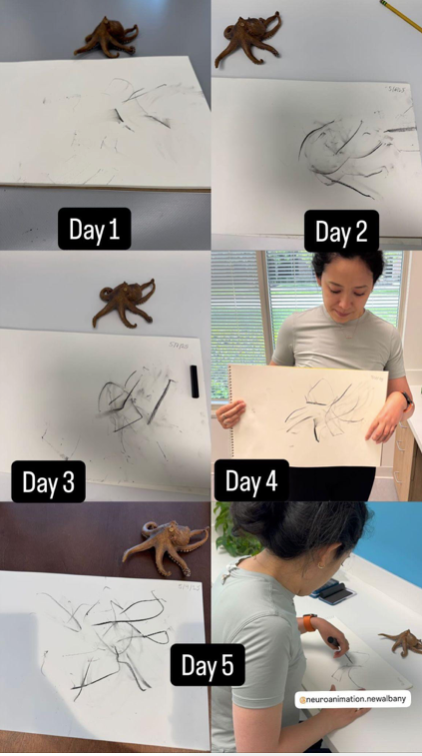Before the age of 22, I had never heard the term “invisible illness,” even though I had been living with one for 12 years. “Invisible illness” is a term used to describe any illness that is not outwardly visible to others, sometimes even healthcare professionals. More than 10% of Americans are living with invisible illnesses today, yet they are still met with a stigma of being thought of as lazy, uncaring, or unmotivated.
My story begins at the ripe old age of 9, when I started getting hormonal acne, it was unpleasant to say the least, but little did I know that the red bumps growing on my face hinted to a much bigger problem brewing below the surface. When I was 10, I visited my first dermatologist and began a long journey of battling the acne that plagued my face, no matter how hard I attacked it with prescription products. What I didn’t know at the time was that my endometriosis was causing a hormonal imbalance, which was leading to my untreatable acne.
Just before my 11th birthday, I got my period, and let me tell you it has been the gift that keeps on giving! I remember from the beginning I was bleeding for many days at a time, and experiencing quite debilitating cramps, but they were tolerable, and I was able to continue with school and activities with minor discomfort. Unfortunately, as I got older, my period never became regular, which it should have been. My acne had also become increasingly more severe, and my cramps had become debilitating to the point where I had missed classes, or almost passed out during social situations. By 13, after discussing my symptoms with my doctor, I went on birth control pills. Over the years, I tried many different kinds of birth control pills and while some helped, none really solved either problem I was experiencing.
In high school I was a very competitive athlete, practicing intensely for 20 hours a week and participating in school and personal competitions weekly. I hated getting my period, and even tried to skip my placebo birth control pills to stop it from coming. It didn’t work. I remember throwing up at so many practices from the pain of my cramps, and there were many times I wanted to stop or miss practice entirely because of their severity. As I had gotten older, the pain had grown from just cramps in my uterus area, it started to travel down my legs and up my back, which made competing very difficult. By senior year, my coach had taken to calling me ‘dramatic,’ ‘a baby,’ and ‘mentally ill’ because of my continued pain. I pushed through, snuck off to throw up, and continued practicing/ competing in severe pain for 5 years thinking that this was just part of being an athlete.
In college, my training upped to 24+ hours a week in addition to competitions that lasted 3 days each weekend. With my body rarely getting the rest it needed, my pains lasted longer, and were more widespread. I also started to lose weight unintentionally. As the pains got worse, I started to become nauseous as a result, this nausea then affected how I could eat. For months at a time, I would feel absolutely starving only to start gagging as soon as I put anything in my mouth. It was miserable, I was weak, and I knew something had to be wrong, this couldn’t be normal.
After sustaining a concussion, a flare-up was triggered that lasted for 6 months. I had my period for 2-3 weeks consistently with a 3-4 day break in between cycles. I couldn’t get out of bed, go to class, or see friends, and I became severely depressed. After 6 months, I went to see a GI specialist, because I thought the cramps had a gastrointestinal cause. I thought that maybe I had an ulcer or too much acid in my stomach. Upon examination, the specialist determined that this was not a gastrointestinal issue, but rather a gynecological one, and brought in a specialist from his practice. The specialist examined me and reviewed my symptoms and then said a sentence I didn’t know I had been waiting years to hear, “have you ever heard of endometriosis?”
The doctor explained that endometriosis is a medical condition in which lining similar to that of the uterus, aka. endometrium, attaches to other parts of the body like the ovaries, fallopian tubes, and the tissue lining the pelvis. It can even grow on your lungs! These ‘adhesions’ of tissue on other organs can cause immense pain during the menstrual cycle as they also thicken, break down, and bleed, just like the lining of the uterus. The cause of endometriosis is unknown, and the symptoms vary from excessively painful cramps before, during and after your menstrual cycle, heavy menstruation, irregular periods, infertility, painful urination and intercourse, painful bowel movements, fatigue, bloating, early satiety, nausea, and vomiting, among others. Not everyone with endometriosis will have every symptom, and the severity of symptoms varies from person to person. 1 in 10 women have endometriosis!
Once I had been examined by the specialist and he suspected endometriosis, he ordered a slew of testing to be done to confirm. Some of the test included various ultrasounds, blood tests, hormone tests, and MRIs. Most cases of endometriosis require surgery for diagnosis, which is done laparoscopically. After receiving an endometriosis diagnosis, treatments vary from prescriptions to adjust hormone levels, switching from birth control pills to an IUD, and changes in diet, like cutting out foods that increase inflammation. Regular (not extreme!) exercise is also great for easing symptoms, and it helps you recover from flare-ups more quickly. The only real form of treatment for endometriosis currently is to have laparoscopic surgery in which the adhesions are removed, after which patients are usually put in artificial menopause for 6-12mos to ensure the adhesions don’t immediately grow back. Unfortunately, even with this treatment there is no guarantee that the adhesions won’t grow in new places, or reoccur in the original ones.
After my endometriosis diagnosis, I was put on Spironolactone for my hormones and my acne (it works like magic), and I now have a Mirena IUD instead of taking birth control pills. I will say getting the IUD was extraordinarily unpleasant, I was not properly warned of the pain to expect. If you decide to go this route, ask your doctor if they can numb you up before they insert the IUD. You should also be prepared to have someone pick you up from your appointment, they don’t recommend that, but if you react badly it’s nice to know you aren’t vulnerable on your way home.
Another way I have been managing my endometriosis symptoms is through diet and exercise, I found out that gluten, and caffeine were triggers for my symptoms, so I cut them out of my diet. I also try to exercise 3-4 days a week, my favorite ways to keep my body moving are to go for long walks, or to take a Pilates class, a cycling class, a boxing class, or a ballet class.
Some things that can cause flare-ups for me outside of food-triggers are stress, cold, and not getting enough rest or exercise. When I am experiencing a flare-up, the most important thing to do is to get rest. Reboundwear’s Molly Pants are a must-have, they are soft, stretchy, and unzip from the sides so you can easily position your heating pad without having to move! Some of my favorite things to enjoy when I am dealing with a flare-up are watching TVLand re-runs or Real Housewives (Thank you for bringing Heather back to RHOC Andy!), spending time with loved ones, reading, singing, and playing fetch with my black cat named Spock. Otherwise, I like to be out on the streets of Manhattan soaking in all the amazing things the city has to offer!




Leave a comment
This site is protected by hCaptcha and the hCaptcha Privacy Policy and Terms of Service apply.